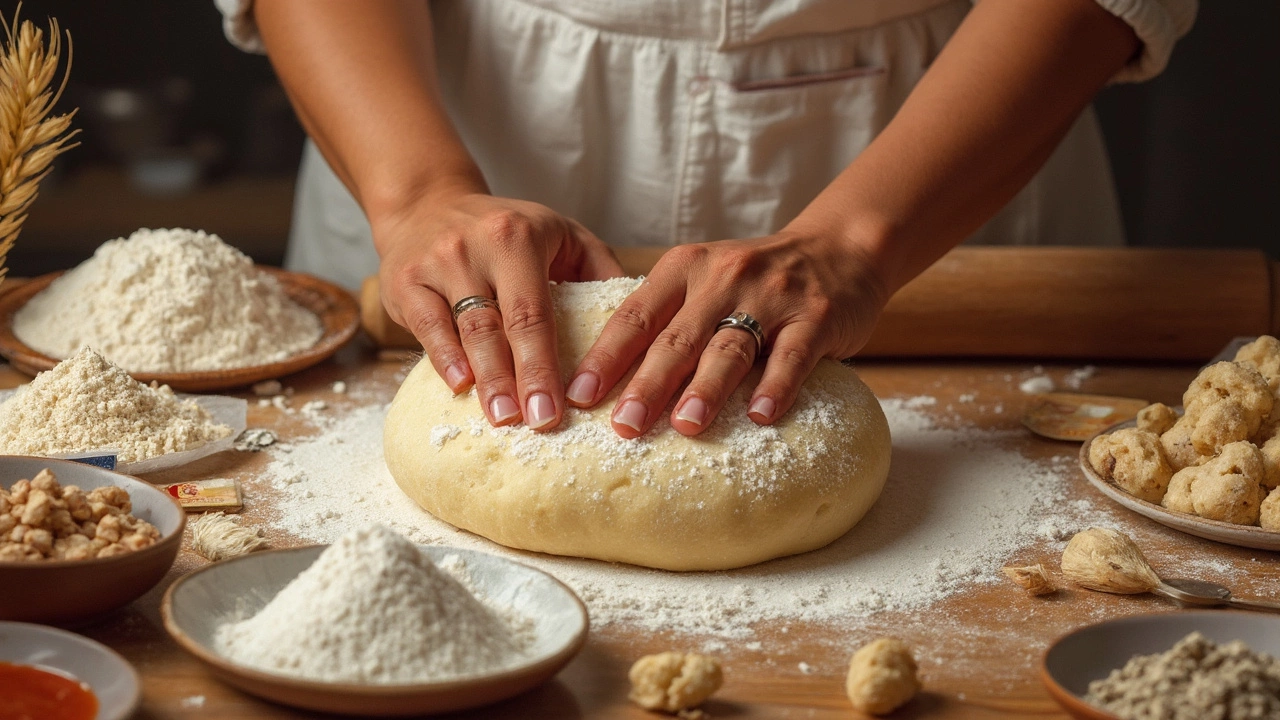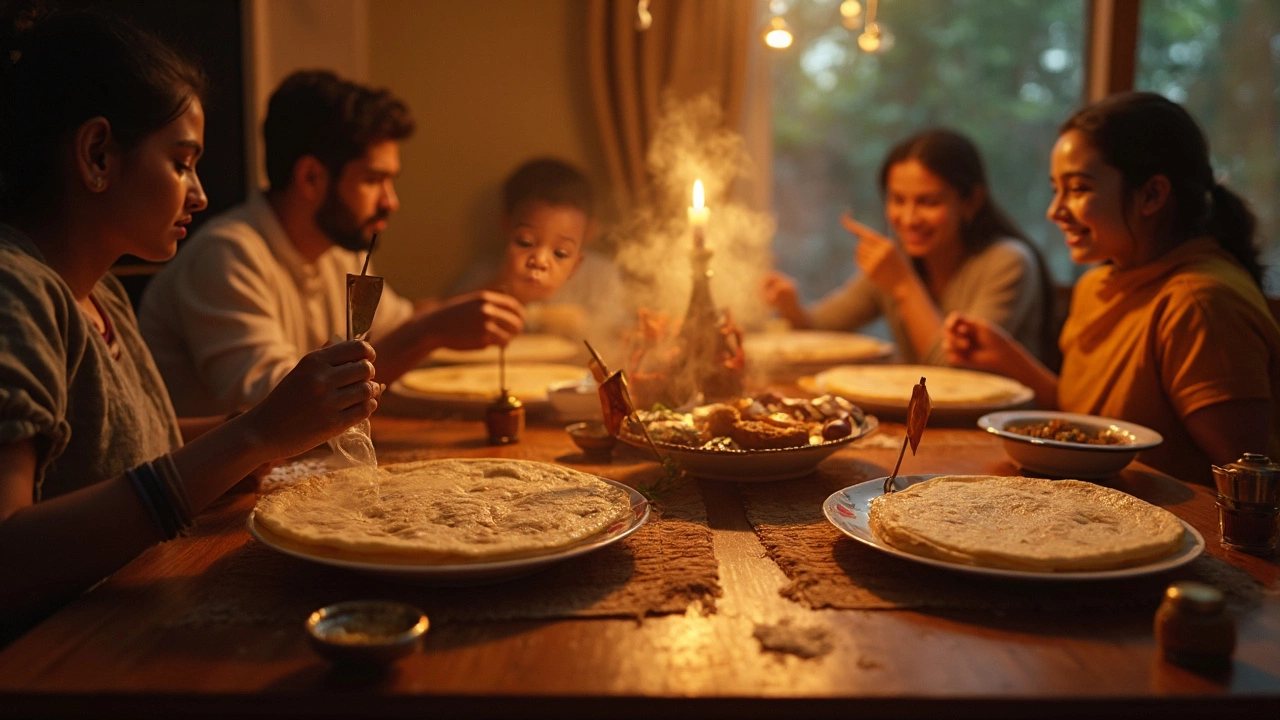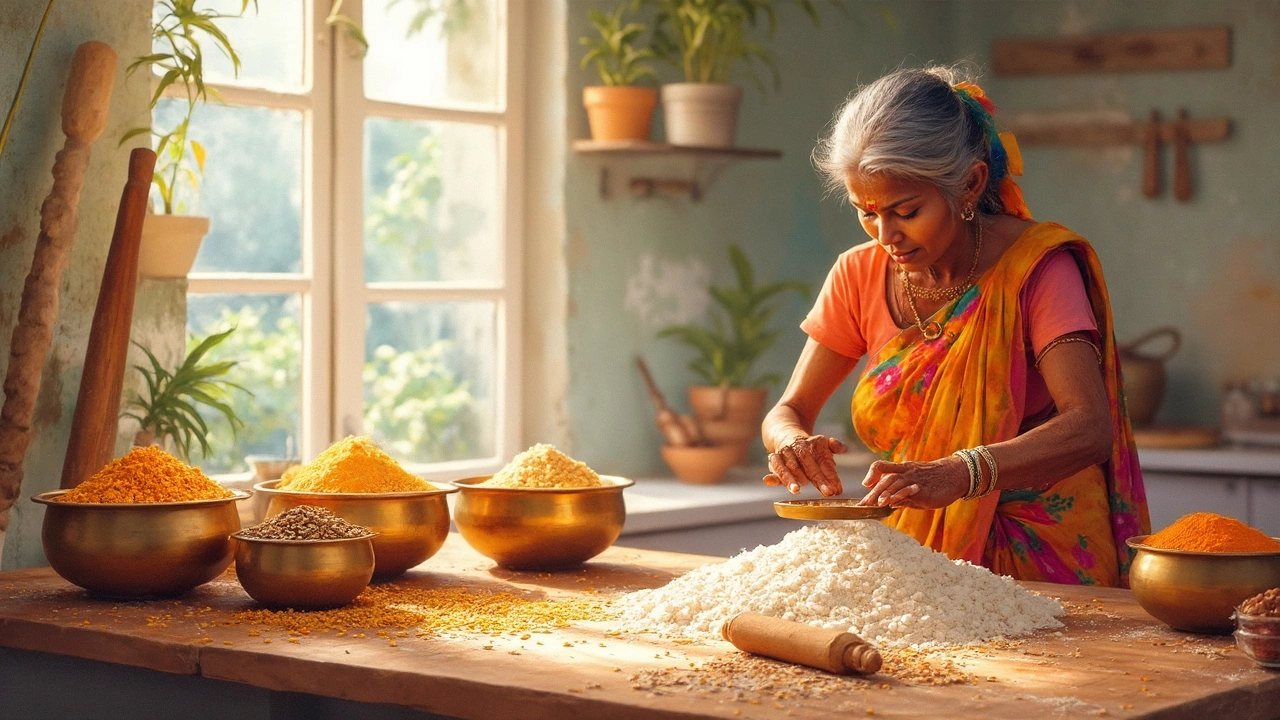Pop quiz: Walk into any kitchen in India at dinnertime and what do you smell? Fresh, warm roti, buttery steam swirling around. Now, here’s what always gets people debating—what’s the best flour for roti? Maybe you’ve tried a dozen flours and still end up with chewy disks or barely-edible frisbees, which, trust me, my cat Neko once decided were better toys than dinner. The magic ingredient isn’t fancy equipment—it’s the right flour. But with supermarket shelves crammed with shiny bags labeled “chakki atta,” “whole wheat,” “multigrain,” and even “gluten-free roti flour,” it’s a little wild trying to choose. The science behind soft, puffy rotis is simple but fascinating, and some choices can totally change the flavor, texture, and nutrition of your daily bread. Ready to unlock what really matters in picking flour for the ultimate homemade roti?
What Makes a Flour Perfect for Roti?
First up: Roti needs a flour that can handle some stretch. Roti should puff up, be soft, and have that lovely chewiness without feeling dense like clay. This all boils down to gluten structure and the grind of the flour. Best flour for roti comes down to two big factors—protein content and how finely milled the flour is. Traditional Indian “atta” flour stands way above the rest in popularity. This is a stoneground whole wheat flour, made from a specific strain of wheat called Triticum aestivum—which happens to have a slightly lower protein content than hard American wheat, but with just enough gluten for the roti to be super pliable.
What makes Indian atta different from Western whole wheat flour? Atta is milled finer, so you get a softer dough. Plus, it uses the bran and germ for a richer, nutty flavor, but without the heaviness or grit you sometimes get in heavier American whole wheat flours. In fact, a study by the Indian Institute of Food Processing Technology found roti made from traditional chakki-milled atta had a 40% higher puff rate and scored significantly better on taste panels than roti made from roller-milled whole wheat flour. The stoneground method also means the wheat doesn’t heat up as much, so more nutrients stick around in the flour.
Look at this quick comparison of typical flours used in roti-making:
| Flour Type | Protein (%) | Main Use | Texture |
|---|---|---|---|
| Indian Chakki Atta | 10-12 | Everyday Roti | Soft, Light, Nutty |
| Western Whole Wheat | 12-14 | Bread, Hearty Roti | Dense, Chewy, Slight Grit |
| All-Purpose (Maida) | 8-10 | Naan, Paratha | Very Soft, Less Flavor |
| Multigrain Mixes | Varies | High-Fiber Roti | Coarse, Earthy |
| Gluten-Free Blends | 0 | Special Diets | Crumbly, Less Puff |
If you’re shopping outside South Asia, look for bags clearly labeled “atta” instead of just “whole wheat flour.” Often, Indian or South Asian groceries stock chakki atta imported from India or Canada—both deliver a soft, flexible dough. Curious about additives? Many brands are just 100% wheat, but some pre-mixes will add “vital wheat gluten,” malted barley, or even old-school chickpea flour for extra protein and flavor twist.

Nutritional Breakdown and Specialty Flours
This is where things get personal. Classic whole wheat atta wins for fiber, B vitamins, iron, and magnesium—all those things your grandma said were good for your hair and brain. A typical roti (made with chakki atta) has 60-70 kcal, 2.5 grams of protein, and only trace fat per piece. Plus, the glycemic index of whole wheat roti is lower than maida-based breads like naan, keeping you full longer (and keeping energy spikes at bay). That’s good motivation to swap out white flour for the real deal if you haven’t already.
But the roti world is bigger than just wheat! Today, multigrain and gluten-free flours have fans, each bringing something different—though honestly, you’ll always get the best puff with wheat. Popular multigrain blends mix atta with millet (bajra), sorghum (jowar), soy, and even barley. It boosts the nutrient profile, adds fiber, and sometimes a nutty kick, but watch the texture—these make roti denser and chewier. Bajra and jowar alone deliver gluten-free rotis: earthy and gorgeous, but they won’t puff the same way. My friend who eats gluten-free sticks to a blend of millet and potato starch for her rotis and says adding a spoon of oil to the dough helps stop them cracking.
- Traditional Chakki Atta: Ultra-soft, high fiber, old-school flavor. My top pick, and Neko-approved (he licks the leftovers!)
- American Whole Wheat: Good in a pinch for hearty rotis, especially if you sift out some bran for a lighter crumb.
- Gluten-Free: Bajra (millet), jowar (sorghum), rice flour, or chickpea blends—works for diets or allergies, but roll between parchment for best results.
- Store Pre-Mixes: Quick, but check ingredient labels for preservatives or extra gluten, especially if tracking macros or allergies.
Want an easy nutrition upgrade? Add a spoonful of flaxseed meal or chia—that boosts healthy omega-3s and ups fiber without messing with the roti’s soft bite. If you like a slightly sweet, earthy edge, add a handful of oat flour to your atta and watch the flavor deepen without getting heavy.

Secrets to Soft Roti: Tips for Choosing and Preparing Flour
Alright, you’ve got your flour lined up. How do you turn powder into soft, pillowy rotis? Some tricks are non-negotiable. First rule: Always use fresh flour. Flour that’s been sitting around gets stale and can make the dough bitter or tough. Fold the flour with warm (not hot) water—about 60% water to flour by weight helps gluten develop gently and avoids dense chapati. If you want extra-soft rotis, add 1–2 tablespoons of yogurt or a drizzle of oil to the dough. It’s an old Punjab auntie secret that makes a visible difference.
Rest your dough for at least 20 minutes—this lets the flour soak and gluten relax, so rolling is easier and rotis puff better. If using multi-grain or gluten-free flour, let it rest a bit longer (30–40 minutes), and remember—these doughs are stickier. Knead fast and keep your hands dusted. Pro tip: If the weather’s dry, cover the dough with a humid towel to keep it from forming a skin.
Rolling also matters. Always use minimal dry flour to dust the surface—too much and you get tough, floury rotis. Gentle, even pressure is the aim, rolling outward from the center and occasionally flipping the dough. Don’t sweat if they’re not perfectly round; good rotis have character. If yours don’t “balloon,” press them gently with a clean cloth while on the tawa (griddle)—this pushes steam inside and gets that classic puff.
Here are some quick do’s and don’ts:
- Do store flour in a cool, airtight container—exposure to humidity destroys texture.
- Do try brands before settling—quality varies a ton between millers. Sujata, Aashirvaad, Pillsbury, and Annapurna are all solid Indian brands.
- Don’t use cold water for kneading—it tightens gluten and toughens up the dough.
- Do experiment with blends—add a tablespoon of barley flour in winter for a heartier taste.
- Don’t skip the resting stage, no matter how hungry everyone is. Trust me, it’s worth it.
If you want to stretch a bag of expensive atta, blend half with all-purpose flour, but stick to wheat as your main base for softness and flavor. For next-level roti, brush them with a hint of ghee the minute they come off the tawa—keeps them soft for hours, and the flavor just explodes. One last fun fact? Rural homes in India often sift their own flour to just the right fineness, adjusting texture for monsoon or summer. That’s why a family recipe is never quite the same twice.
So, does the best flour for roti exist? Yes—and it depends on what you crave: softness and puff (pick real chakki atta), added nutrition (go multigrain), or special diets (gluten-free blends will do the job). The only true sin is skipping the joy of hot rotis off a smoky pan—cat by your side, steam in the air, quick enough to beat the dinner crowd. That’s non-negotiable.
